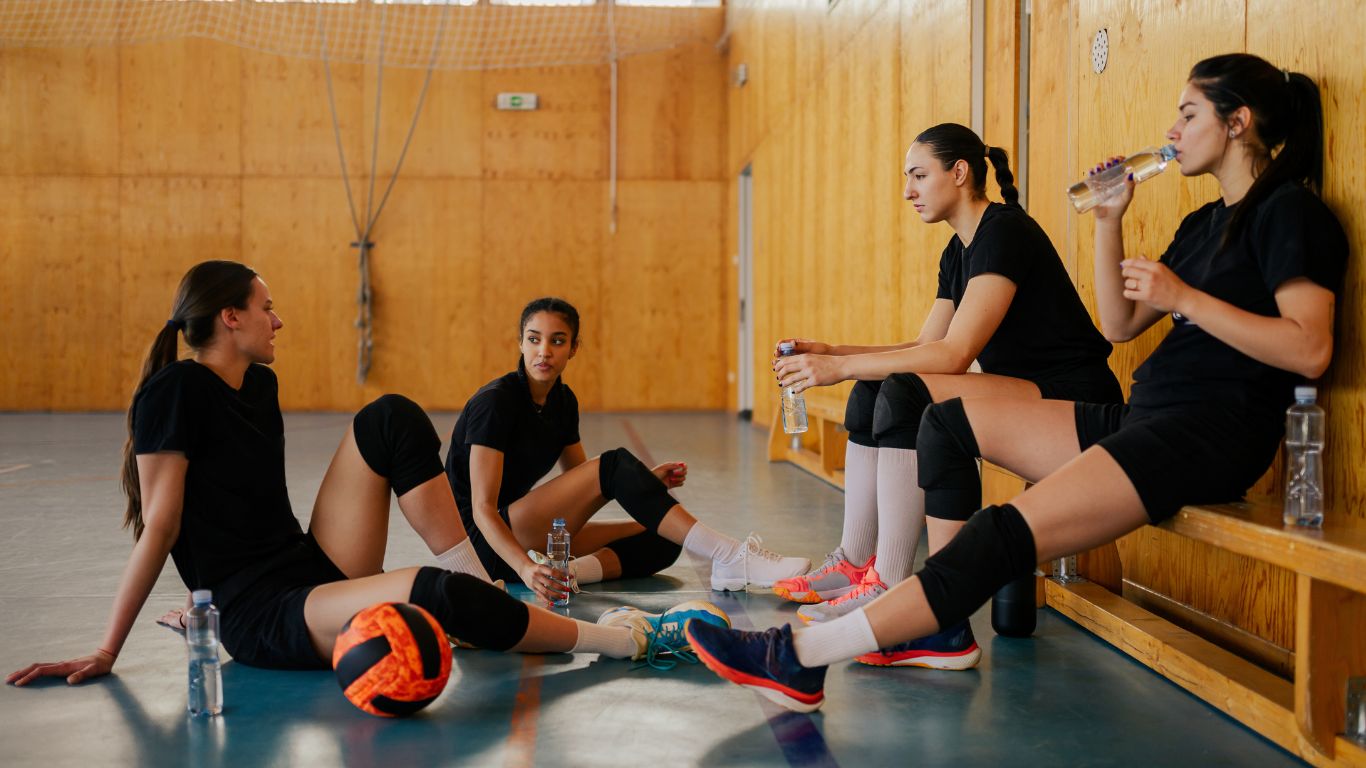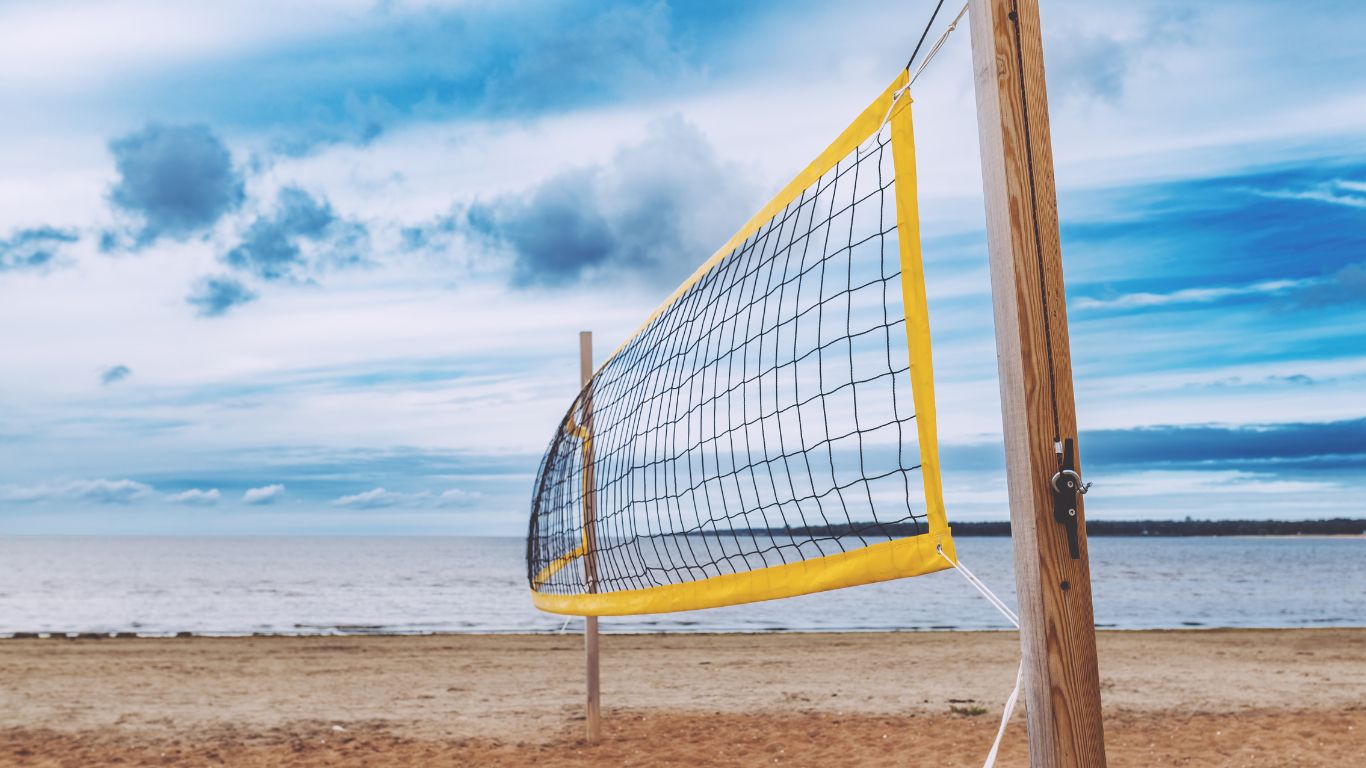To draw a volleyball, start by sketching a circle for the body and adding curved lines for the panels. Then, draw two curved lines intersecting in the middle to create the seams.
(19 words) Drawing a volleyball can be a fun and creative activity for both beginners and experienced artists. Whether you want to create an artwork, design a logo, or simply learn a new skill, understanding the process of drawing a volleyball is essential.
By following a few easy steps and using basic shapes, you can create a realistic representation of a volleyball on paper or digitally. We will provide a concise guide on how to draw a volleyball, with clear instructions to help you create an accurate and eye-catching depiction. So, let’s get started and unleash your artistic potential by mastering the art of drawing a volleyball. (115 words)
Mastering The Basics
Learn the fundamental steps of drawing a volleyball with this comprehensive guide. Perfect for beginners, this tutorial will help you master the basics of creating a realistic volleyball design.
Understanding Volleyball Anatomy
Before delving into the exciting world of volleyball drawing, it’s essential to understand the anatomy of this beloved sport. By familiarizing yourself with the key components, you’ll be able to create an accurate and realistic representation of a volleyball.
The anatomy of a volleyball consists of a few important elements:
- Cover: The outer layer of the ball is made of synthetic leather or composite material, providing durability and grip.
- Bladder: Inside the cover lies the bladder, which is typically constructed from rubber or latex. This internal component helps the ball maintain its shape and bounce.
- Panel: Volleyballs usually consist of 18 or 32 panels stitched together. These panels provide the unique design and pattern on the ball’s surface.
- Seams: The seams are the lines that connect the individual panels. They play a crucial role in the ball’s flight and ball control.
- Logo: Many volleyballs bear a logo or brand mark, usually found on one of the panels. This adds to the authenticity and aesthetic appeal of the ball.
Gathering The Right Tools
Now that you have a good grasp of the volleyball’s anatomy, it’s time to gather the necessary tools to start the drawing process. While you can use any artistic medium you prefer, here are the basic tools you’ll need:
- Pencil or Pen: These writing instruments will serve as your main tool for outlining and sketching the volleyball.
- Paper or Sketchpad: Choose a smooth, untextured surface that allows for easy erasing and adjustments to your drawing.
- Eraser: An eraser is essential for correcting mistakes or refining your sketch as you progress.
- Ruler or Compass: These tools are optional but can be handy for creating precise measurements and perfect circles.
- Colors or Markers: Depending on whether you’re going for a black-and-white sketch or a colored illustration, gather your preferred coloring tools.
Sketching The Outline
Sketching the outline is the first step in learning how to draw a volleyball. This crucial step sets the foundation for the rest of the drawing, allowing you to accurately depict the shape and proportions of the ball. In this section, we will guide you through the process of creating the outer shape, adding volleyball panels, and giving your drawing a realistic touch.
Creating The Outer Shape
To start, draw a large circle on your paper using a pencil. This circle will serve as the outer shape of the volleyball. It’s important to make the circle as round and symmetrical as possible. If you find it challenging to create a perfect circle freehand, you can use a compass or trace around a circular object like a jar lid or a small plate.
Remember to keep your lines light and sketchy at this stage, as you may need to make adjustments later on. Once you’re satisfied with the shape of your circle, you can move on to the next step of adding the volleyball panels.
Adding Volleyball Panels
Volleyballs are typically made up of panels with a distinct pattern. To make your drawing more realistic, we need to incorporate these panels into the outline. Start by visualizing the volleyball as a sphere and imagine six evenly spaced sections around it.
Using the edge of your circle as a guide, lightly sketch six curved lines from the top to the bottom. These lines should intersect each other and divide the circle into six equal panels. To ensure accuracy and symmetry, you can use a ruler or straight edge to draw these lines.
Once you have the basic framework of the panels, add curved lines within each section to form the shape of each panel. These lines should follow the curve of the outer shape, converging to form the distinctive pattern on a volleyball.
Now that you have added the panels, you can refine the outline of the volleyball by erasing any unnecessary construction lines. You can also darken the outline to make it more prominent, using a pen or a darker pencil.
Adding Depth And Details
When it comes to drawing a volleyball, adding depth and details can take your artwork to the next level. In this section, we’ll explore techniques for shading, texture, and other details to make your drawing realistic and visually appealing.
Shading For Realism
Shading is crucial for creating depth and realism in your volleyball drawing. By adding subtle shading to different areas of the ball, you can make it appear round and three-dimensional. Start by identifying the light source in your drawing, then use light and dark shading to mimic the way light falls on the ball. Creating a smooth gradient between light and dark areas will enhance the three-dimensional effect and make your drawing more realistic.
Incorporating Texture
Incorporating texture into your volleyball drawing can further enhance its realism. You can use cross-hatching to simulate the texture of the ball’s surface. By adding fine lines in a crisscross pattern, you can create the appearance of the ball’s texture and seams. Additionally, consider using varying line weights to differentiate between smooth areas and textured areas, adding depth to your drawing.

Credit: www.kumospace.com
Perfecting Proportions
Drawing a volleyball requires careful attention to detail, especially when it comes to achieving perfect proportions. Balancing Size and Placement and Refining Symmetry are two crucial aspects to consider in order to create a realistic and visually appealing volleyball sketch. Let’s dive right into these key aspects and explore how you can improve your volleyball drawing skills.
Balancing Size And Placement
When drawing a volleyball, it’s essential to ensure that the size and placement of the different elements are well-proportioned. To achieve this, you can follow these simple steps:
- Start by sketching a perfect circle to represent the outline of the ball. This will serve as the foundation for the rest of your drawing.
- Next, divide the circle into two equal halves by drawing a vertical line through the center. This line will act as a guide to maintain symmetry.
- Now, carefully position the distinct features of the volleyball, such as the seams and the logos, based on their size and arrangement on a real ball. Pay attention to their placement relative to the centerline and the edges of the circle.
Remember, maintaining a balanced size and placement is crucial to ensure your volleyball looks realistic and proportional.
Refining Symmetry
One of the key elements that contribute to a visually pleasing volleyball drawing is symmetry. Achieving perfect symmetry can be a challenging task, but with some practice, you can master it. Here are a few techniques to help you refine symmetry in your volleyball drawing:
- Use the vertical line you drew earlier as a reference point to ensure that both sides of the volleyball mirror each other.
- Pay close attention to the placement and size of the seams. Make sure they align properly with the centerline and maintain a consistent width throughout.
- Regularly step back and observe your drawing from a distance to identify any potential asymmetry. This will help you make necessary adjustments and refine the overall symmetry.
By focusing on refining symmetry, you can add a touch of professionalism to your volleyball drawing and make it more visually appealing.
Mastering Perspectives And Angles
When it comes to drawing a volleyball, mastering perspectives and angles is essential to create a lifelike and dynamic representation. Understanding 3D projection and exploring different views will help you bring depth and realism to your drawings. In this section, we will delve into these concepts and provide you with helpful tips to improve your volleyball drawing skills.
Understanding 3d Projection
Before you start sketching a volleyball, it’s essential to understand how 3D projection works. Perspective is a technique used to create the illusion of depth and distance in two-dimensional drawings. It enables you to depict the volleyball from different angles, making your artwork appear more realistic. To achieve this, you need to know how lines converge towards a vanishing point on the horizon. The size of the ball and its shape will determine how close or far the vanishing point should be.
To properly depict the three-dimensionality of a volleyball, it’s crucial to determine the light source and incorporate shading accordingly. This adds volume and depth, making your drawing more convincing. Remember to observe the volleyball’s curvature and how shadows fall on its surface. Pay attention to the areas that receive less light and those that are highlighted, as these details contribute to the overall realism.
Exploring Different Views
When drawing a volleyball, exploring different views can provide a fresh perspective and add visual interest to your artwork. Start by visualizing the volleyball in your mind and thinking about how it would appear when viewed from various angles. This will help you to choose the most dynamic and compelling pose for your drawing.
To draw a volleyball from different views, you can experiment with various positions, such as viewing it directly from the front, back, or even from above. Don’t be afraid to get creative and try unconventional angles. This will allow you to capture the unique features and contours of the ball, making your drawing more engaging.
| Front View | Back View | Top View |
|---|---|---|
By exploring different views and perspectives, you can gain a better understanding of the volleyball’s form and structure. This knowledge will further enhance your artistic skills and enable you to create more dynamic and realistic drawings.
Now that you have a grasp on understanding 3D projection and exploring different views, you are well on your way to mastering perspectives and angles when drawing a volleyball. With practice and experimentation, your drawings will continue to improve, capturing the essence of this beloved sport.

Credit: www.linkedin.com
Highlighting Techniques
Highlighting is a crucial technique when drawing a volleyball as it brings dimension and realism to the artwork. By mastering the art of highlighting, you can create a vibrant and dynamic representation of the volleyball that jumps off the page. Let’s explore the different techniques to effectively incorporate highlights into your volleyball drawings.
Using Highlights For Shine
When creating the appearance of shine on the volleyball, concentrate on the areas where light naturally hits the surface. Focus on the top portion of the ball to emulate the reflection of light, using lighter shading to convey the brightness. Utilize a blend of white and light grey to create a luminous effect, bringing the volleyball to life on the page.
Emphasizing Ball Movement
To depict the movement of the volleyball, utilize highlights to accentuate the curves and contours. Emphasize the edges and curves with lighter tones, creating a sense of depth and motion within the drawing. By strategically placing highlights along the curved lines, you can effectively convey the dynamic nature of the volleyball in action.

Credit: www.facebook.com
Frequently Asked Questions
How Do You Draw A Simple Volleyball?
To draw a simple volleyball, start by sketching a circle for the ball. Add curved lines across the circle to create the panels. Draw a smaller circle at the bottom to represent the valve. Finally, use shading techniques to give the volleyball a three-dimensional look.
How Do You Draw A Trophy?
To draw a trophy, start with the outline of the cup shape. Then add the handles and base detailing. Finally, add in any additional elements and shading for a realistic look. Be sure to practice and take your time for accuracy.
How Do You Draw A Big Cross?
To draw a big cross, start by drawing a vertical line, then draw a horizontal line that intersects the vertical line in the middle. Make sure the lines are equal in length.
How Do You Draw A Soccer Ball?
To draw a soccer ball, start with a circle. Draw pentagons and hexagons inside the circle to create the pattern. Fill in the shapes with alternating black and white colors. Use a thin black pen to outline the shapes for a finished look.
Conclusion
Mastering the art of drawing a volleyball can be a fun and rewarding experience. By following the step-by-step guide outlined in this post, you can improve your skills and create impressive volleyball illustrations. Remember to practice regularly and embrace your creativity to enhance your drawing abilities.
With dedication and patience, you can become a skilled volleyball artist in no time. Happy drawing!









